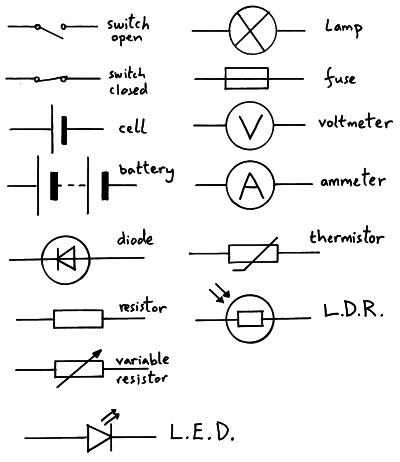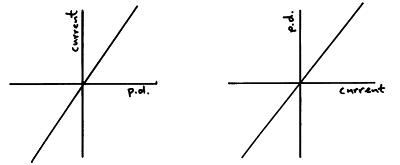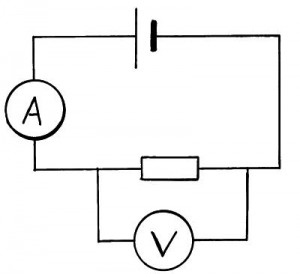Circuit Symbols
Potential difference, current & resistance
Potential difference (V) is the amount of joules per coulomb of charge, it is measured in volts (V).
Current (I) is the amount of charge per second passing a point in a circuit, it is measured in amps (A).
Resistance (W) ratio of potential difference across a component to the current flowing through it, it is measure in ohms (W).
A resistor at constant temperature (ohmic conductor)
Current is directly proportional to potential difference. Doubling the potential difference doubles the current in the circuit. The resistance remains the same. Plotting a graph of potential difference against current gives a straight line passing through the origin (0,0).
Ohm’s Law
“The electrical current in a conductor is proportional to the potential difference applied to it provided the temperature remains the same.”
Potential difference = current x resistance
(V, volts V) (I, amps A) (R, ohms W)
Measuring current and potential difference
Current is measure with an ammeter, ammeters are always connected in series.
Potential differences are measured using a voltmeter, voltmeters are connected in parallel.
By measuring the current and potential difference you can calculate the resistance.






